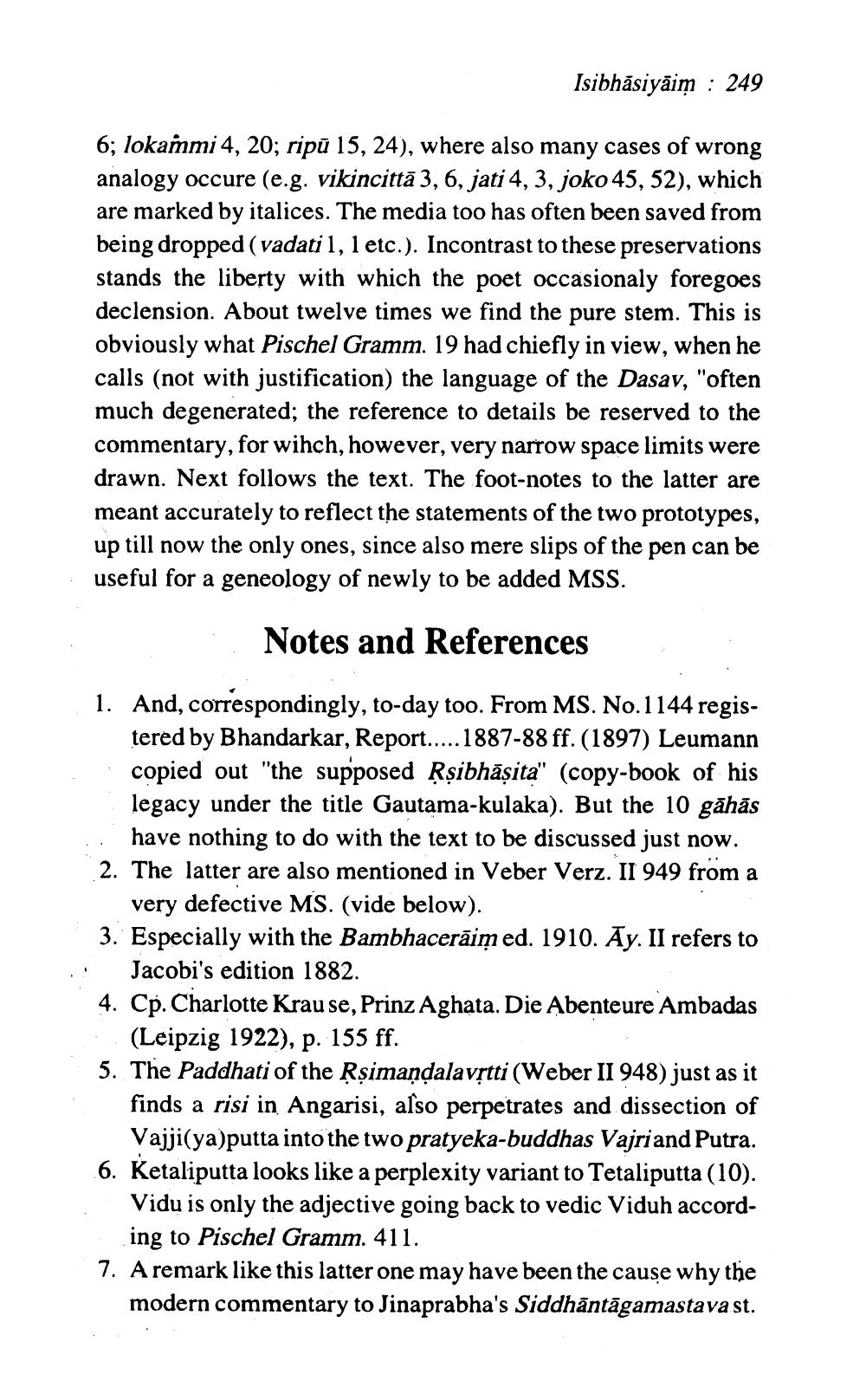________________ Isibhasiyaim : 249 6; lokammi 4, 20; ripu 15, 24), where also many cases of wrong analogy occure (e.g. vikincitta 3, 6, jati 4, 3, joko 45, 52), which are marked by italices. The media too has often been saved from being dropped (vadati 1, 1 etc.). Incontrast to these preservations stands the liberty with which the poet occasionaly foregoes declension. About twelve times we find the pure stem. This is obviously what Pischel Gramm. 19 had chiefly in view, when he calls (not with justification) the language of the Dasav, "often much degenerated; the reference to details be reserved to the commentary, for wihch, however, very narrow space limits were drawn. Next follows the text. The foot-notes to the latter are meant accurately to reflect the statements of the two prototypes, up till now the only ones, since also mere slips of the pen can be useful for a geneology of newly to be added MSS. Notes and References 1. And, correspondingly, to-day too. From MS. No.1144 regis tered by Bhandarkar, Report..... 1887-88 ff. (1897) Leumann copied out "the supposed Rsibhasita" (copy-book of his legacy under the title Gautama-kulaka). But the 10 gahas have nothing to do with the text to be discussed just now. 2. The latter are also mentioned in Veber Verz. II 949 from a very defective MS. (vide below). 3. Especially with the Bambhaceraim ed. 1910. Ay. II refers to .: Jacobi's edition 1882. 4. Cp. Charlotte Krause, Prinz Aghata. Die Abenteure Ambadas (Leipzig 1922), p. 155 ff. 5. The Paddhati of the Rsimandalavrtti (Weber II 948) just as it finds a risi in Angarisi, also perpetrates and dissection of Vajji(ya)putta into the two pratyeka-buddhas Vajriand Putra. 6. Ketaliputta looks like a perplexity variant to Tetaliputta (10). Vidu is only the adjective going back to vedic Viduh accord ing to Pischel Gramm. 411. 7. A remark like this latter one may have been the cause why the modern commentary to Jinaprabha's Siddhantagamastavast.




